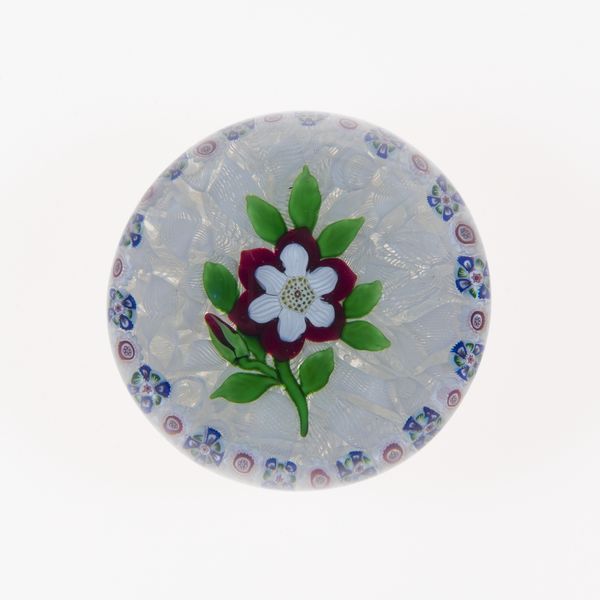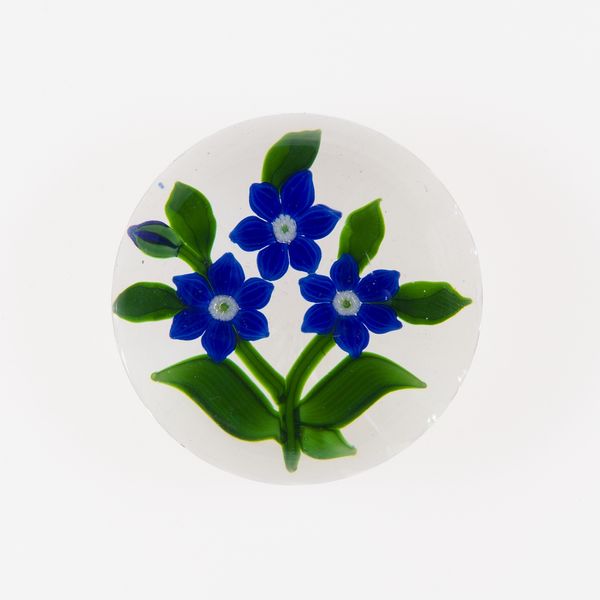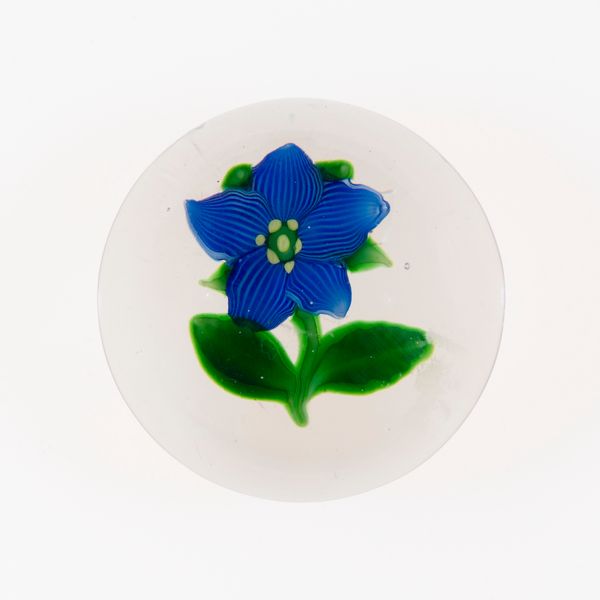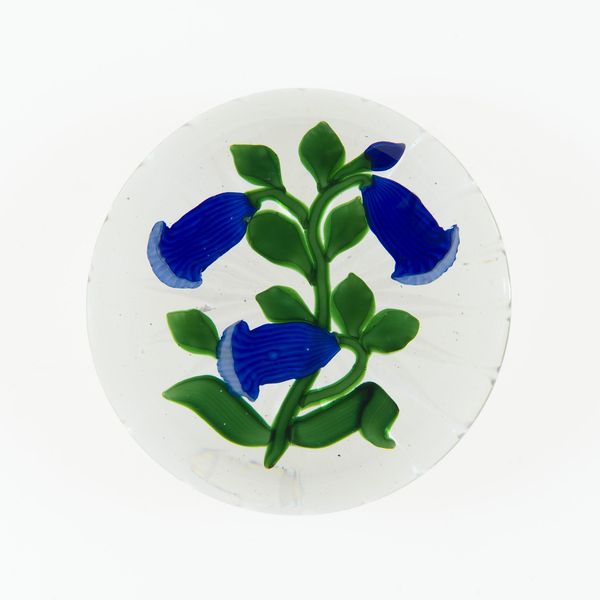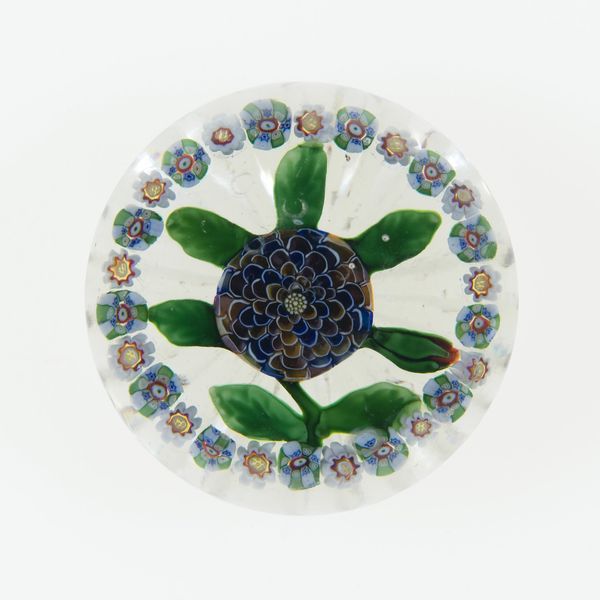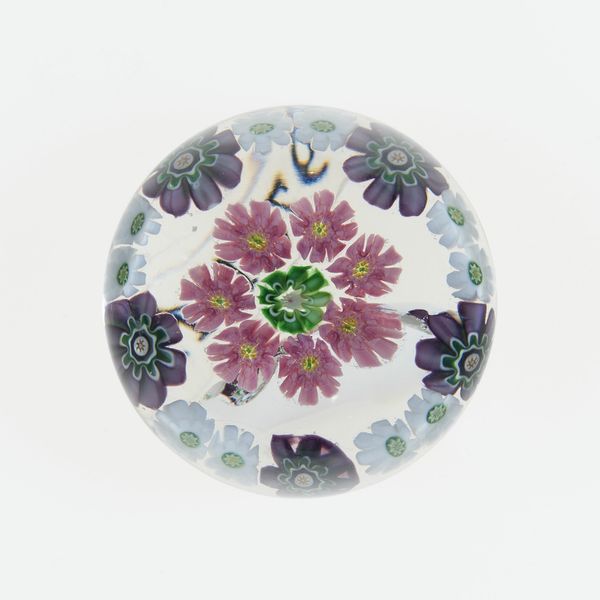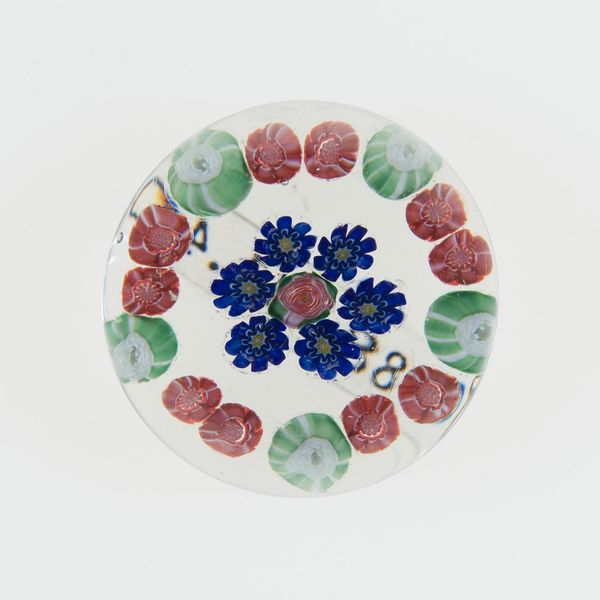
paper, glass
#
paper
#
glass
#
geometric
#
france
#
decorative-art
Dimensions: Diam. 7.3 cm (2 7/8 in.)
Copyright: Public Domain
Curator: We're looking at a glass paperweight made by the Compagnie de Saint Louis, likely created between 1845 and 1860. It resides here at The Art Institute of Chicago. Editor: My first impression is one of contained beauty. The floral arrangement, frozen in glass, it has an air of a preserved, delicate moment. Curator: Absolutely. Paperweights like these gained popularity during the mid-19th century, and were often crafted using lampwork, where glass rods are heated and shaped. This piece utilizes that technique, creating an almost perfectly rendered botanical scene. It has complex latticino patterns as a bed, on top of which it displays 3 murrine flowers each slightly unique. The color palette is restricted. How does this object relate to social and labor dynamics of its time? Editor: I see the appeal for that social class to invest in glass decor for domestic display and utility. These paperweights signify control over the material world; owning a durable, precious commodity as opposed to, say, freshly picked wildflowers. Consider the specialization and labor intensification involved to perfect such miniature glasswork as a sign of France's economy, the technique, and artistry, reflecting social mobility and trade as an indication of financial security, which are all things to consider in art as it is created in an era of mass production, consumption, and capitalism. The intricate work also hints to the high level of hand skills and expertise. Curator: And these motifs are hardly chosen at random. The carefully selected florals could easily echo a collector's or artist's sentiments; maybe as emblems for romance, wealth or just as symbolic elements used for decoration and their significance throughout centuries of human culture and history, where the same images re-emerge time and again, even through art that is mass produced. Editor: Perhaps its geometry serves to highlight how consumer capitalism influences how we view our surrounding landscape. These are geometric forms that could give order in urban existence. And that ultimately it could simply reflect and influence human thought as the product of human industry. Curator: This object is clearly more than just meets the eye when it captures a particular time with its symbolic meaning. Editor: Exactly. A small window, maybe even a lens through which to understand a moment.
Comments
No comments
Be the first to comment and join the conversation on the ultimate creative platform.







